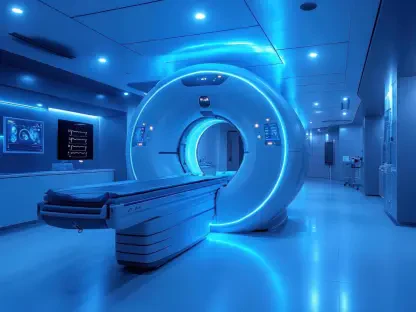In the dynamic world of biotechnology, gene therapy represents a transformative frontier, promising life-changing treatments for rare genetic disorders like Duchenne muscular dystrophy (DMD). However, with innovation comes complexity, as safety concerns and immune response challenges continue to shape market dynamics. Sarepta Therapeutics, a key player with its pioneering therapy Elevidys, faces significant hurdles, while Hansa Biopharma offers a potential breakthrough with its pretreatment drug imlifidase. This market analysis delves into current trends, safety setbacks, and emerging solutions, providing critical insights into how these developments influence investment landscapes and therapeutic access for patients worldwide.
Unpacking the Gene Therapy Market: Trends and Drivers
The gene therapy sector is experiencing rapid growth, driven by advancements in adeno-associated virus (AAV) vectors and increasing demand for solutions to rare diseases. Market projections suggest a compound annual growth rate surpassing 20% from 2025 to 2030, fueled by regulatory approvals and expanding clinical pipelines. Sarepta Therapeutics stands at the forefront with Elevidys, the first FDA-approved gene therapy for DMD, targeting a patient population desperate for effective interventions. However, the high stakes of safety and efficacy continue to temper investor enthusiasm, as adverse events can swiftly alter market perceptions and stock valuations.
Beyond individual therapies, the broader trend of immune response management has emerged as a pivotal factor in market stability. AAV vectors, while effective in delivering genetic material, often trigger severe immune reactions, necessitating robust immunosuppressive strategies. This challenge has spurred collaborations among biotech firms, with partnerships focusing on complementary technologies to mitigate risks. The interplay between innovation and risk management is reshaping competitive dynamics, as companies that address these barriers stand to gain significant market share.
A notable driver in this space is the growing emphasis on personalized medicine, with therapies increasingly tailored to individual immune profiles. Regulatory bodies, including the FDA, are adapting frameworks to balance patient access with stringent safety standards, influencing how quickly new solutions reach the market. As these trends unfold, understanding the specific challenges faced by leaders like Sarepta, alongside emerging opportunities from partners like Hansa, becomes essential for stakeholders aiming to navigate this high-potential sector.
Deep Dive into Sarepta’s Challenges and Market Impact
Safety Concerns with Elevidys: A Market Risk Factor
Sarepta Therapeutics has encountered substantial obstacles with Elevidys, particularly concerning patient safety, which has direct implications for market confidence. Reports of adverse events, including tragic patient outcomes linked to immune responses and potential liver injury from AAV vectors, have led to heightened regulatory oversight. The FDA’s cautious approach, restricting distribution to specific patient demographics at adjusted doses, reflects a broader market concern about balancing therapeutic benefits against unforeseen risks.
These safety setbacks have not only impacted Sarepta’s operational timelines but also influenced investor sentiment, with fluctuations in stock performance tied to regulatory updates. The market’s reaction underscores a critical reality: while Elevidys holds transformative potential by enabling micro-dystrophin production in DMD patients, persistent immune challenges could limit its commercial reach. Biotech investors are closely monitoring how Sarepta addresses these issues, as resolution could restore trust and drive long-term growth.
Moreover, the ripple effects extend to the broader gene therapy market, where safety concerns with one therapy can cast shadows over others in development. Competitors and stakeholders are taking note, recalibrating risk assessments and prioritizing immune mitigation strategies in their pipelines. For Sarepta, overcoming these hurdles is not just about Elevidys but also about maintaining leadership in a sector where trust and reliability are paramount.
Hansa’s Imlifidase: A Potential Market Catalyst
Amid Sarepta’s struggles, Hansa Biopharma’s imlifidase emerges as a promising solution with the potential to shift market dynamics. This engineered enzyme, already approved in Europe for kidney transplant rejection under the name Idefirix, targets immunoglobulin G (IgG) antibodies to reduce immune responses. Early-phase trial data involving DMD patients with pre-existing anti-AAV antibodies demonstrated a remarkable 95% or greater reduction in IgG levels, facilitating Elevidys administration and resulting in measurable protein production.
While these results signal a positive step, market analysts remain cautious due to observed lower micro-dystrophin levels compared to other trials, raising questions about efficacy. Additionally, the risk of infection due to diminished antibody levels poses a challenge to widespread adoption. Nevertheless, imlifidase’s potential to expand patient eligibility for gene therapies could unlock new revenue streams, positioning Hansa as a valuable partner in the biotech ecosystem and attracting investor interest.
The market implications of this innovation are significant, as pretreatments like imlifidase could redefine access to gene therapies, particularly for niche patient groups previously excluded due to immune barriers. If further trials validate safety and effectiveness, Hansa could see accelerated partnerships and licensing opportunities, enhancing its footprint in a competitive landscape. This development highlights how ancillary technologies can drive value in the gene therapy market beyond primary treatments.
Broader Market Implications and Strategic Collaborations
The collaboration between Sarepta and Hansa, established several years ago, exemplifies a growing trend of strategic alliances in biotechnology aimed at addressing complex challenges. Their joint efforts extend beyond DMD to explore imlifidase applications in other rare conditions, such as limb-girdle muscular dystrophy, through additional partnerships with research entities. Such collaborations are becoming a cornerstone of market strategy, pooling expertise to tackle multifaceted issues like immune response management.
Regional variations in regulatory acceptance add another layer of complexity to market expansion. While imlifidase enjoys approval in Europe, its path in the U.S. remains under clinical evaluation, influencing global deployment timelines and investment decisions. Market participants must navigate these disparities, aligning strategies with localized regulatory expectations to maximize reach and impact.
Looking ahead, the gene therapy market is likely to see increased focus on scalable solutions that address niche problems like pre-existing antibodies, though long-term safety data will be critical to sustaining momentum. Misconceptions about the universal applicability of pretreatments persist, but the reality is that these innovations are targeted tools within a larger framework. For investors and companies, recognizing these nuances is key to positioning within an evolving competitive landscape.
Future Projections: Shaping the Gene Therapy Investment Landscape
As the gene therapy market progresses, managing immune responses will remain a central theme influencing investment and development strategies. Emerging trends point toward innovations in vector design, potentially reducing reliance on AAV vectors and minimizing adverse reactions. These advancements, though still in early stages, could reshape market hierarchies by introducing safer delivery mechanisms over the next five to seven years.
Regulatory evolution is another critical factor, with agencies adopting more adaptive policies to expedite approvals while maintaining safety benchmarks. This shift could accelerate market entry for novel therapies and pretreatments, benefiting companies that proactively align with updated guidelines. Analysts anticipate that partnerships, mirroring the Sarepta-Hansa model, will proliferate, enabling shared risk and enhanced innovation capacity across the sector.
Investment forecasts suggest cautious optimism, with capital flowing toward firms that demonstrate progress in mitigating immune challenges. Personalized immunosuppression regimens, tailored to patient-specific profiles, represent a long-term opportunity, though clinical realization remains distant. Stakeholders are advised to monitor trial outcomes and regulatory updates closely, as these will serve as pivotal indicators of market direction and profitability potential.
Reflecting on Market Insights and Strategic Pathways
Looking back, this analysis highlights the intricate balance of risk and opportunity that defines the gene therapy market for Sarepta Therapeutics and Hansa Biopharma. The safety challenges with Elevidys underscore persistent barriers that temper market confidence, while imlifidase’s early promise offers a counterpoint of hope for expanding therapeutic access. The collaborative trends and regulatory nuances further paint a picture of a sector in flux, navigating uncharted territory with high stakes.
Moving forward, biotech firms are encouraged to prioritize immune response mitigation as a core pillar of development, integrating solutions like pretreatments into strategic roadmaps. Investors find value in diversifying portfolios across primary therapies and enabling technologies, hedging against single-point failures. For regulators and clinicians, fostering adaptive frameworks that support iterative innovation without compromising safety emerges as a critical next step. Ultimately, the path ahead demands vigilance and partnership, ensuring that the transformative potential of gene therapy translates into tangible outcomes for patients and stakeholders alike.









